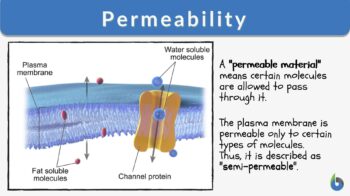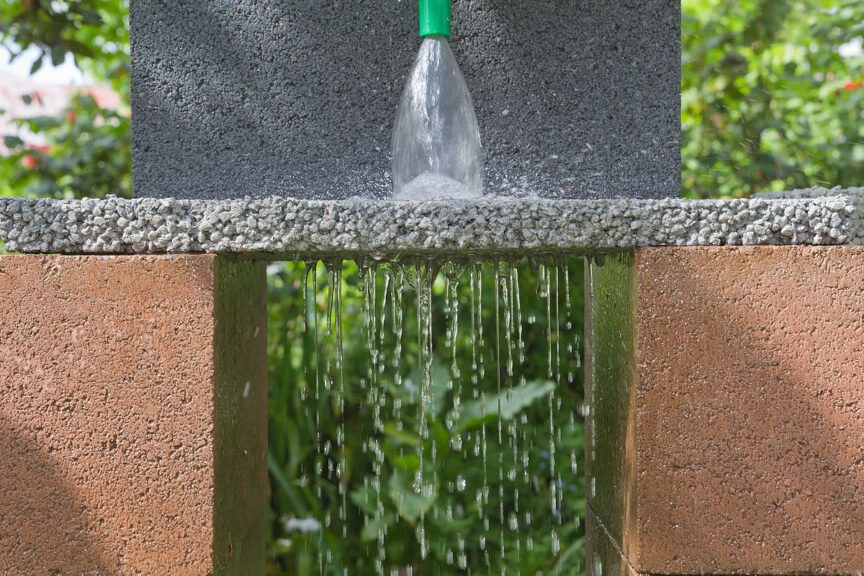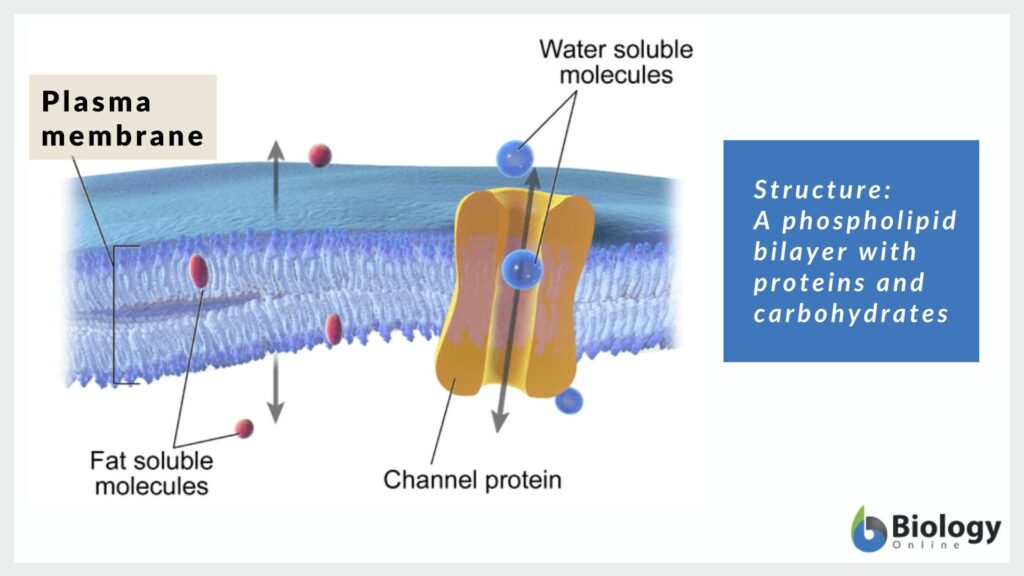
Permeability
n., plural: permeabilities
[ˌpɝmi.əˈbɪlɪti]
Definition: property or state of being permeable
Table of Contents
Permeability Definition
What is permeability? In earth science, its definition is this: “the ability of any material such as rocks to pass fluids or gases through its pores”. The porosity and the shapes of the pores define the permeability of the medium. The flow of fluids can also be influenced by the brittleness of rocks.
The higher the permeability, the more rapidly the fluids will flow through pores. Pressure in rocks affects their permeability.
Some rocks having low permeability are acidized or fractured to increase their permeability. This allows the flow of fluids. Therefore, the factors affecting rock permeability include the following: viscosity of the fluid, the difference in applied pressure, the thickness of the medium, and its permeability.
What are permeability units? Permeability units differ according to the measured type. For example, Darcy is the permeability measuring unit in rocks. In other words, it is the velocity of fluids through pores. In electromagnetism, the magnetic permeability unit is Henries per meter or newtons per ampere.
Permeability refers to the ability of fluids to pass through materials, such as rocks.
Permeability is related to the size, connections, and number of openings in a material. So, how to define permeability? Its meaning could pertain to the ease of the fluid to flow through pores.
For example, an extremely porous rock with unconnected pores has low or no permeability. On the other hand, a rock with few connected pores will ease the flow of fluids through the rock.

Permeability Examples
There are 3 types of permeability: effective, absolute, and relative permeabilities. Effective permeability is the ability of fluids to pass through pores of rocks or membranes in the presence of other fluids in the medium. Absolute permeability is the measured permeability when the medium is fully saturated with one fluid only. Relative permeability describes the ability of a particular rock to allow the flow of a particular fluid. Consequently, values of relative permeability change by changing the rock type or the fluid. Also, relative permeability is defined as the ratio between the permeability of any medium compared to the permeability of vacuum or air. The relative permeability of air = 1. Relative permeability does not have a unit, it is usually expressed in values ranging from 0 to 1 or a percentage. The magnetic permeability of water is relatively close to that of vacuum.
Permeability is a broad term that includes different types such as magnetic permeability, rocks permeability, and membrane permeability. However, all these types represent the passage of fluids (liquids or gases) through pores.
Permeability (definition in geology) is the ability of different materials such as rocks to pass fluids. Permeability of soil (definition) is the permeability of the soil particles to air and water. Soil permeability is one of the most important considerations while choosing an area for cultivation. The soil is made up of several layers and the quality differs from one layer to another. Soil permeability is extremely important since it determines the rates of movement of water into and through the soil.
Porous soil maintains oxygen levels in the root which helps in the respiration of the root and microbes that help in the growth of the plant. Moreover, the presence of oxygen regulates the temperature of the soil. The soil texture gives an indication of the number of pores and pore size in the soil. The presence of impurities in the soil may decrease its permeability.
Magnetic permeability is the ratio of magnetic induction to the intensity of the magnet. Magnetic permeability helps in the measurement of the resistance of materials to magnetic fields or measuring the extent to which the magnetic field can penetrate objects. The greater the magnetic permeability, the greater the magnetic lines’ conductivity of force. Magnetic permeability depends on humidity, temperature, frequency of applying the force, the position of the magnet in the medium, and the nature of the material. It varies with magnetic fields and always has a positive value.
Permeability definition in biology is associated with biological membranes and the ability to regulate the passage of molecules, such as by passive diffusion and by active transport. The rate of diffusion indicates the membrane permeability. The permeability of biological membranes usually depends on the polarity, electrical charge, and molar mass of the molecule.
Cell membranes are hydrophobic in nature. Therefore, electrically neutral small molecules can pass more easily through the membrane than charged large molecules. They are permeable to gases and small fluids.

READ: Movement of Molecules Across Cell Membranes
Permeability is the state, condition, or property of a material (such as a biological membrane) to allow the passage of molecules through it. In a living system, however, the passage of molecules across the membrane is regulated. Not all molecules can easily pass through. Some of them have to use membrane proteins to facilitate transport.
Try to answer the quiz below to check what you have learned so far about permeability.
References
- 9. SOIL PERMEABILITY. 9. (n.d.). http://www.fao.org/fishery/docs/CDrom/FAO_Training/FAO_Training/General/x6706e/x6706e09.htm.
- Admin. (2021, May 18). Magnetic Permeability -Definition, Formula, Units, Types. BYJUS. https://byjus.com/jee/magnetic-permeability/.
- Effective Permeability. ScienceDirect Topics. (n.d.). https://www.sciencedirect.com/topics/engineering/effective-permeability.
- Lyons, W. C. (2013, February 13). Basic Principles, Definitions, and Data. Working Guide to Reservoir Engineering. https://www.sciencedirect.com/science/article/pii/B9781856178242000010.
- Nature Publishing Group. (n.d.). Cell Membranes. Nature News. https://www.nature.com/scitable/topicpage/cell-membranes-14052567/.
- Permeability. Engineering ToolBox. (n.d.). https://www.engineeringtoolbox.com/permeability-d_1923.html.
- Permeability. ScienceDirect Topics. (n.d.). https://www.sciencedirect.com/topics/materials-science/permeability.
- Relative Permeability. ScienceDirect Topics. (n.d.). https://www.sciencedirect.com/topics/engineering/relative-permeability.
- Team, V. C. (2020, October 23). What is the relative permeability of air? What is the relative permeability of air A 1 B 2 C class 12 physics CBSE. https://www.vedantu.com/question-answer/relative-permeability-of-air-a-1-b-2-c-class-12-physics-cbse-5f92a504a946521147ca3153.
- Wikimedia Foundation. (2021, June 26). Permeability of soils. Wikipedia. https://en.wikipedia.org/wiki/Permeability_of_soils.
©BiologyOnline.com. Content provided and moderated by Biology Online Editors.







